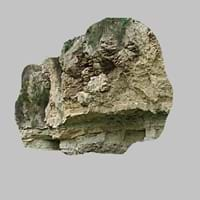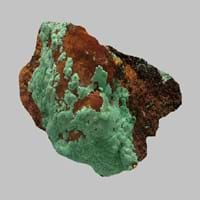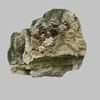Definition
A water-soluble mineral sediment resulting from concentration and crystallization by evaporation from an aqueous solution
Gossan is intensely oxidized, weathered or decomposed rock, usually the upper and exposed part of an ore deposit or mineral vein.
Discoverer
Usiglio
Cornish Gossen
Etymology
From a sediment left after the evaporation
From Cornish gossen from gos, blood from Old Cornish guit
Class
Sedimentary Rocks
Metamorphic Rocks
Sub-Class
Durable Rock, Soft Rock
Durable Rock, Medium Hardness Rock
Group
Not Applicable
Not Applicable
Other Categories
Coarse Grained Rock, Fine Grained Rock, Medium Grained Rock, Opaque Rock
Fine Grained Rock, Medium Grained Rock, Opaque Rock
Texture
Earthy
Rough, Sandy
Color
Colourless, Green, Grey, Silver, White
Brown, Brown- Black, Gold, Green, Rust
Durability
Durable
Durable
Appearance
Glassy, Vesicular and Foilated
Dull and Banded
Interior Uses
Decorative Aggregates, Entryways, Flooring, Homes, Interior Decoration
Countertops, Decorative Aggregates, Interior Decoration
Exterior Uses
As Building Stone, As Facing Stone, Garden Decoration, Paving Stone
As Building Stone, As Facing Stone, Paving Stone, Garden Decoration, Office Buildings
Other Architectural Uses
Curbing
Curbing
Construction Industry
As a Flux in the Production of Steel and Pig Iron, As a Sintering Agent in Steel Industry to process Iron Ore, As Dimension Stone, Cement Manufacture, for Road Aggregate, Making natural cement, Manufacture of Magnesium and Dolomite Refractories
As Dimension Stone, Cement Manufacture, Construction Aggregate, for Road Aggregate
Medical Industry
Taken as a Supplement for Calcium or Magnesium
Not Yet Used
Antiquity Uses
Artifacts
Artifacts
Commercial Uses
Used in the manufacture of Ceramic Powder, Used in the preparation of Sulfuric Acid and Silicon Diborite
Cemetery Markers, Commemorative Tablets, Gemstone
Types
Not Available
Translocated gossan and Leakage gossan
Features
Generally rough to touch, Splintery, Veined
Clasts are smooth to touch, Easily splits into thin plates
Archaeological Significance
Monuments
Not Yet Used
Not Yet Used
Famous Monuments
Not Applicable
Not Applicable
Sculpture
Not Yet Used
Not Yet Used
Famous Sculptures
Not Applicable
Not Applicable
Figurines
Not Yet Used
Not Yet Used
Formation
Evaporite is water-soluble mineral sediment which forms from concentration and crystallization by evaporation from an aqueous solution.
Earth movements can cause rocks to be either deeply buried or squeezed and hence the rocks are heated and put under great pressure.
Mineral Content
Calcite, Cancrinite, Gypsum, Kyanite, Magnetite
Apatite, Augite, Biotite, Bronzite, Calcite, Chert, Epidote, Feldspar, Hornblende, Micas, Plagioclase, Pyroxene, Quartz, Sulfides, Zircon
Compound Content
CaMg(CO3)2, CaO, Calcium Sulfate, KCl, MgO, NaCl
Aluminium Oxide, CaO, Fe, FeO, Silicon Dioxide, Sulphur
Types of Metamorphism
Burial Metamorphism, Cataclastic Metamorphism, Contact Metamorphism, Impact Metamorphism, Regional Metamorphism
Not Applicable
Types of Weathering
Not Applicable
Not Applicable
Types of Erosion
Not Applicable
Chemical Erosion, Sea Erosion, Wind Erosion
Grain Size
Medium to Fine Coarse Grained
Fine to Medium Grained
Fracture
Conchoidal
Conchoidal
Streak
White
White to Grey
Porosity
Less Porous
Highly Porous
Luster
Subvitreous to Dull
Metallic
Compressive Strength
Not Available
Cleavage
Perfect
Not Available
Toughness
Not Available
Not Available
Specific Gravity
2.86-2.99
2.0
Transparency
Translucent
Opaque
Density
2.8-2.9 g/cm3
Not Available
Resistance
Heat Resistant, Pressure Resistant
Heat Resistant, Impact Resistant, Pressure Resistant
Deposits in Eastern Continents
Asia
Not Available
China, India, Indonesia, Russia, Singapore, South Korea
Africa
Not Available
Cape Verde, Ethiopia, Ghana, South Africa, Western Africa
Europe
United Kingdom
Albania, France, Germany, Great Britain, United Kingdom
Others
Not Yet Found
Not Yet Found
Deposits in Western Continents
North America
USA
Canada, USA
South America
Colombia, Paraguay
Brazil, Colombia, Ecuador
Deposits in Oceania Continent
Australia
Central Australia, Western Australia
New South Wales, South Australia, Western Australia
All about Evaporite and Gossan Properties
Know all about Evaporite and Gossan properties here. All properties of rocks are important as they define the type of rock and its application. Evaporite belongs to Sedimentary Rocks while Gossan belongs to Metamorphic Rocks.Texture of Evaporite is Earthy whereas that of Gossan is Rough, Sandy. Evaporite appears Glassy, Vesicular and Foilated and Gossan appears Dull and Banded. The luster of Evaporite is subvitreous to dull while that of Gossan is metallic. Evaporite is available in colourless, green, grey, silver, white colors whereas Gossan is available in brown, brown- black, gold, green, rust colors. The commercial uses of Evaporite are used in the manufacture of ceramic powder, used in the preparation of sulfuric acid and silicon diborite and that of Gossan are cemetery markers, commemorative tablets, gemstone.










